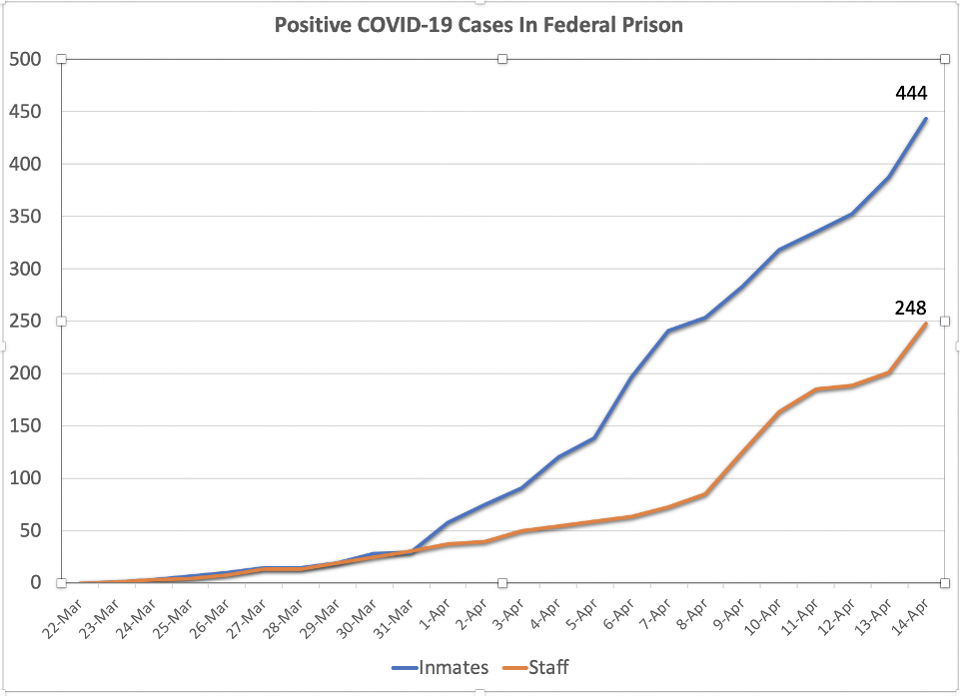We post news and comment on federal criminal justice issues, focused primarily on trial and post-conviction matters, legislative initiatives, and sentencing issues.

3RD CIRCUIT SAYS § 3553 MATTERS IN COMPASSIONATE RELEASE
 Before The First Step Act passed in December 2018, only the Federal Bureau of Prisons could file a motion on behalf of an inmate seeking a “compassionate release” sentence reduction under 18 USC § 3582(c)(1)(A). Disgusted with the BOP’s chariness on seeking releases for sick or dying inmates, Congress included a provision in First Step authorizing prisoners to seek compassionate release directly, after asking the BOP to do so and then waiting 30 days while the BOP either refused or dithered.
Before The First Step Act passed in December 2018, only the Federal Bureau of Prisons could file a motion on behalf of an inmate seeking a “compassionate release” sentence reduction under 18 USC § 3582(c)(1)(A). Disgusted with the BOP’s chariness on seeking releases for sick or dying inmates, Congress included a provision in First Step authorizing prisoners to seek compassionate release directly, after asking the BOP to do so and then waiting 30 days while the BOP either refused or dithered.
Even after First Step passed, compassionate release was not widely used, with something like only about 150 decisions between First Step’s passage and the COVID-19 pandemic. But since the virus, compassionate release has been a fast-growing area of the law. LEXIS records over 2,750 decisions involving COVID-19 and compassionate release. And as of last week, the BOP says that 916 compassionate release sentence reductions have been granted.
Because compassionate release filed by movants other than the government is fairly new, there is very little appellate court interpretation of the statute. The 3rd Circuit, which gave us a terrible decision on exhaustion of remedies under 18 USC § 3582(c)(1)(A) 16 weeks ago in United States v. Raia, last week handed down a more reasoned decision on application of 18 USC § 3553(a) sentencing factors in compassionate release cases.
To earn a compassionate release sentence reduction, a defendant has to make three showings: First, that the reasons for the reduction are “extraordinary and compelling;” second, that the defendant is not a danger to the community; and third, that grant of a sentence reduction is consistent with the sentencing factors in 18 USC § 3553(a). That statute, of course, addresses the considerations a district court should include in making sentencing decisions.
 Edwin Pawlowski had been mayor of Allentown, Pennsylvania, before the feds convicted him for bribery and other political crimes resulting from his shaking down city contractors (a Pennsylvania political sport, if reports from Philadelphia over the past half a century are any guide). He got 180 months, and has served 19 months so far.
Edwin Pawlowski had been mayor of Allentown, Pennsylvania, before the feds convicted him for bribery and other political crimes resulting from his shaking down city contractors (a Pennsylvania political sport, if reports from Philadelphia over the past half a century are any guide). He got 180 months, and has served 19 months so far.
Ed filed a motion with his sentencing court for compassionate release, arguing that he suffers from hypertension, heart disease, COPD, dyspnea, and sleep apnea. All of this is exacerbated by his only having one lung. Ed argued these conditions place him at a higher risk of serious illness from COVID-19 if he catches it, and noted that he is locked up in an FCI that has been badly affected by COVID-19.
The court agreed that all that was true, and that these reasons were extraordinary and compelling bases for compassionate release. However, the district court ruled that the § 3553(a) sentencing factors did not weigh in favor of release, as Ed had served just 10% or so of his 15-year sentence.
In late June, the 3rd Circuit upheld the district court in a non-precedential opinion. Last week, it amended that opinion and made it binding precedent.
The Circuit held that the district court “reasonably concluded that several of the § 3553(a) factors – including the need to reflect the seriousness of the offense, promote respect for the law, and afford adequate deterrence – counsel against compassionate release, as that relief would effectively reduce Pawlowski’s sentence from 15 years to less than two years’ imprisonment. We have not previously considered whether a district court abuses its discretion by denying a motion for compassionate release based on the amount of time remaining to be served in the inmate’s sentence. But numerous district courts have taken this into account in considering whether to grant compassionate release… And at least one of our sister circuits has approved that consideration…”
 The Circuit reasoned that “because a defendant’s sentence reflects the sentencing judge’s view of the § 3553(a) factors at the time of sentencing, the time remaining in that sentence may — along with the circumstances underlying the motion for compassionate release and the need to avoid unwarranted disparities among similarly situated inmates — inform whether immediate release would be consistent with those factors. Hence we cannot conclude that the district court acted unreasonably in determining that the substantial sentencing reduction required for granting compassionate release here… would be inconsistent with the § 3553(a) factors.”
The Circuit reasoned that “because a defendant’s sentence reflects the sentencing judge’s view of the § 3553(a) factors at the time of sentencing, the time remaining in that sentence may — along with the circumstances underlying the motion for compassionate release and the need to avoid unwarranted disparities among similarly situated inmates — inform whether immediate release would be consistent with those factors. Hence we cannot conclude that the district court acted unreasonably in determining that the substantial sentencing reduction required for granting compassionate release here… would be inconsistent with the § 3553(a) factors.”
Here, Ed’s original sentence was within the Guidelines. The district court found that Ed’s crimes “were extraordinarily serious, involving abuse of a position of public trust,” and that these crimes required “a significant period of incarceration.” The district court also found that cutting Ed’s “sentence to time served would result in his serving less time than… his former campaign manager and coconspirator, who pleaded guilty and was sentenced to 60 months.”
Sentencing Law and Policy, Back by popular demand, another VERY long list of federal sentence reductions using § 3582(c)(1)(A) (July 19, 2020)
United States v. Pawlowski, 2020 U.S. App. LEXIS 23431 (3rd Cir., July 24, 2020)
– Thomas L. Root
















 Massachusetts, the United States, and elsewhere in the world,” the plaintiffs’ lawyers wrote in the District of Massachusetts complaint.
Massachusetts, the United States, and elsewhere in the world,” the plaintiffs’ lawyers wrote in the District of Massachusetts complaint.